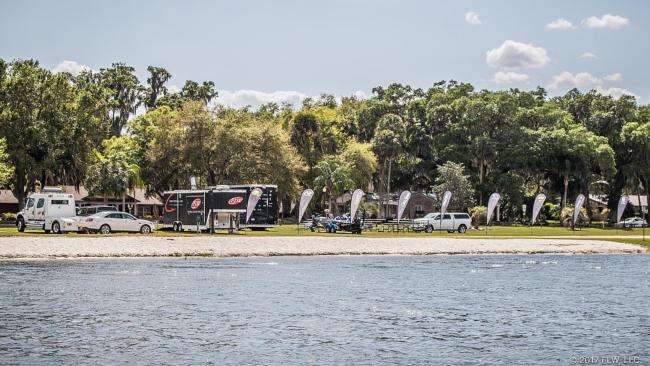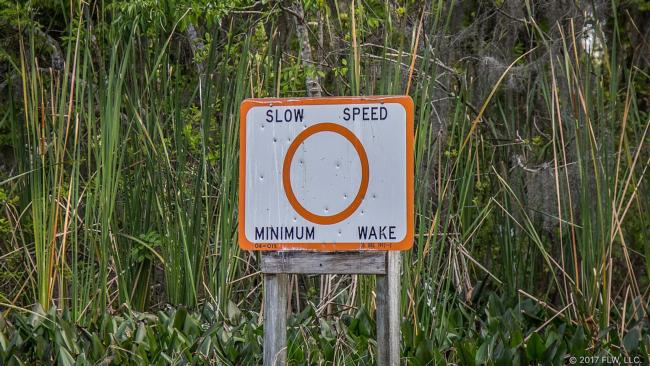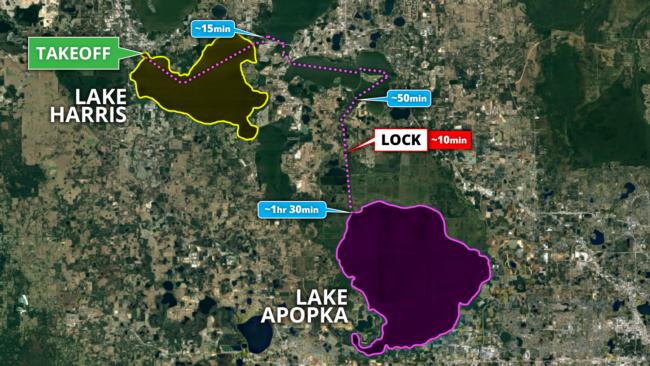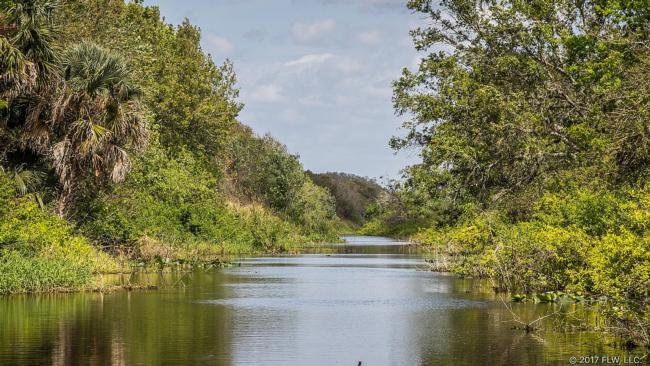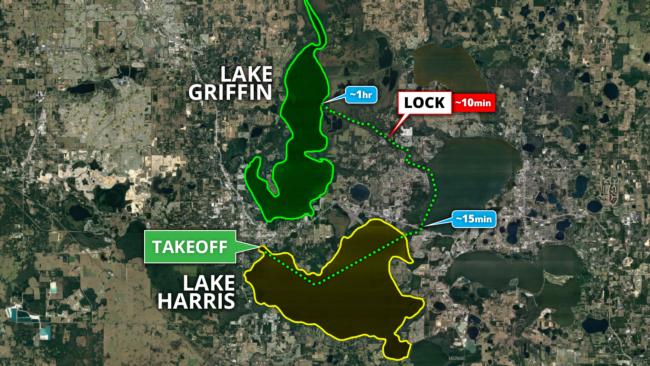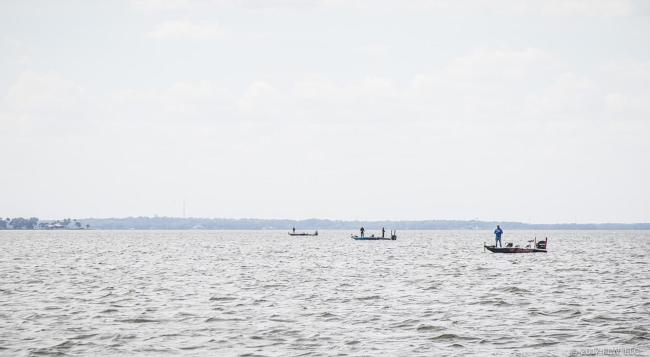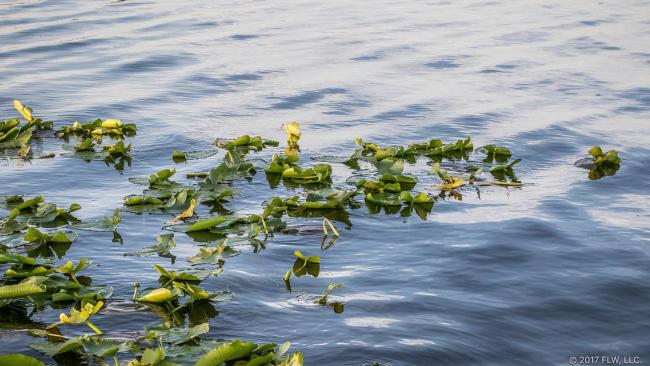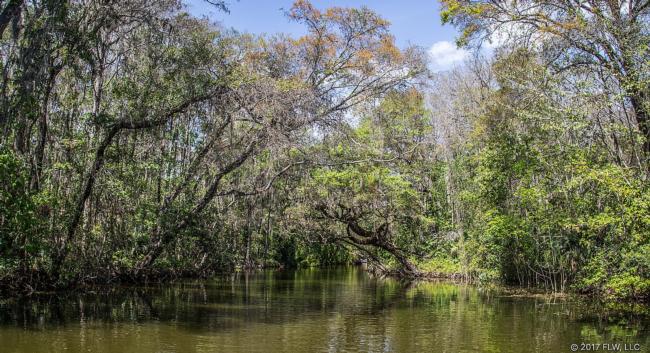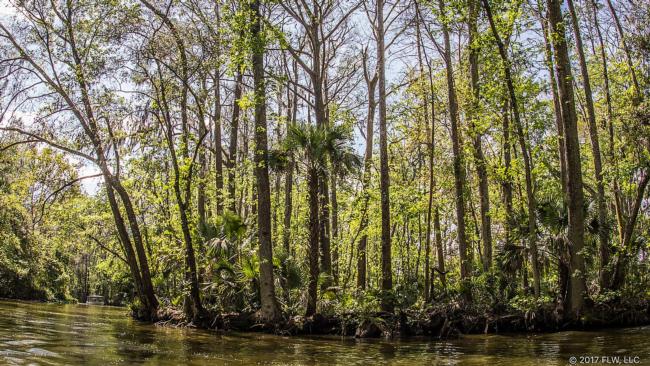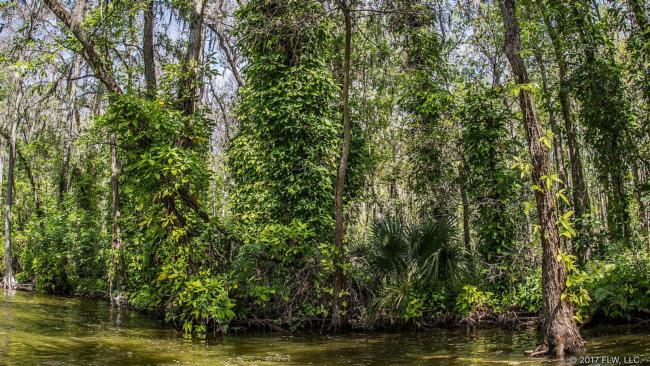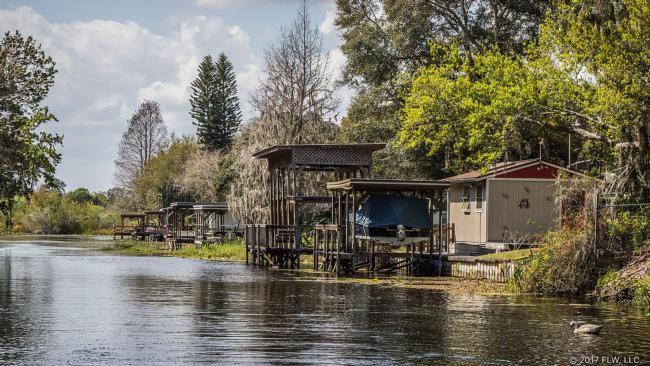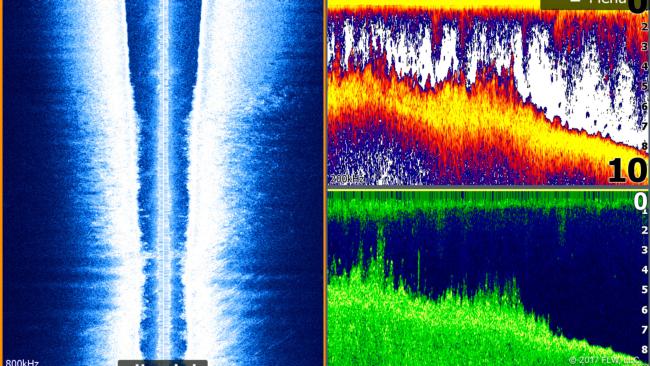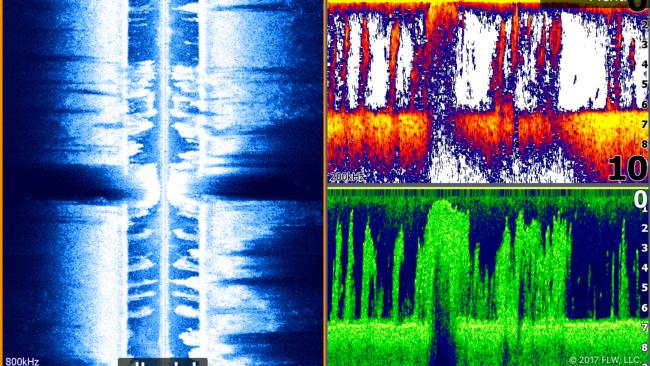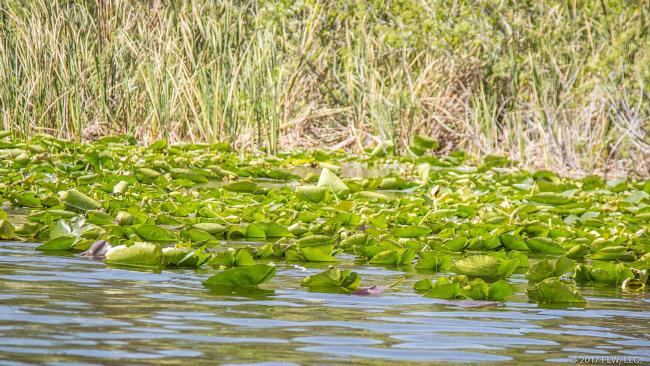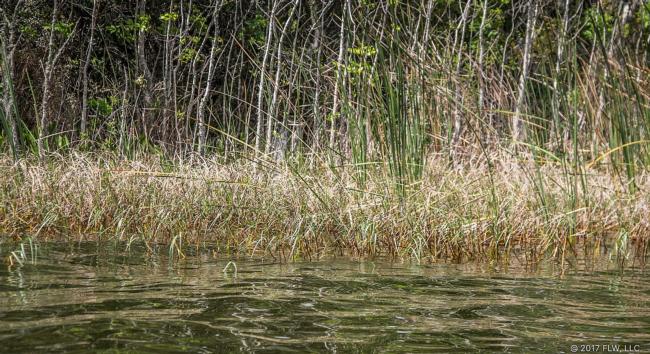What the Harris Chain has to Offer
Getting to know the central Florida chain of lakes
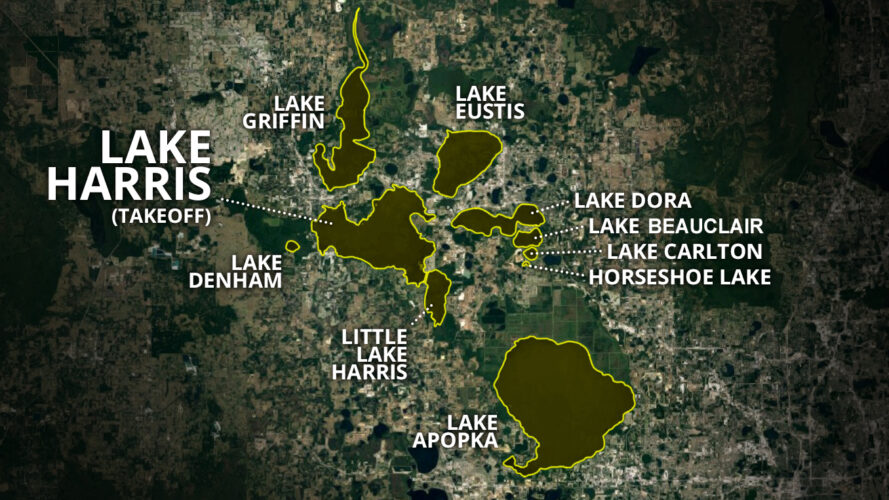
(Editor’s note: This story was first published in 2017 and updated slightly in 2018 and 2020)
When the Tackle Warehouse Pro Circuit presented by Bad Boy Mowers kicks off on the Harris Chain this week, the pros will be spreading out onto one of the most interesting playing fields in fishing. The tournament launches at Lake Harris, but open waters also include Lake Apopka, Lake Griffin, Lake Eustis, Lake Dora, Lake Carlton, Horseshoe Lake, Little Lake Harris, Lake Denham and Lake Beauclair. In all, the pros have the run of 10 lakes, plus the myriad residential canals, rivers and backwaters that spread out off of them.
Weigh-in and takeoff each day will take place on the northwest side of Lake Harris at Ski Beach Park on Lake Harris Drive in Leesburg, Fla. From there, pros have the whole of Harris and Little Lake Harris at their disposal before they need to enter one of the chain’s numerous idle zones.
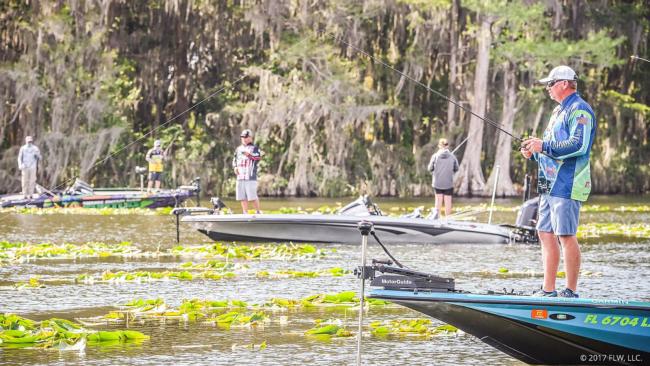
The Dead River is a no-wake passage between Harris and Lake Eustis, and Eustis is sort of the gateway to the rest of the fishery. From Eustis, you can choose to head into Haines Creek and toward Lake Griffin, or into the canal that leads to Lake Dora and all the other lakes in the chain. Running flat out through Harris, it takes just about 15 minutes until pros will be able to power up and run out into Eustis to points beyond.
Though the Dead River is an annoyance to drive though, it’s going to produce some fish this week. It’s wider than any of the other canals and has pad fields in the middle, as well as docks and plenty of other cover. Though heavily trafficked, it’s a place where bass live.
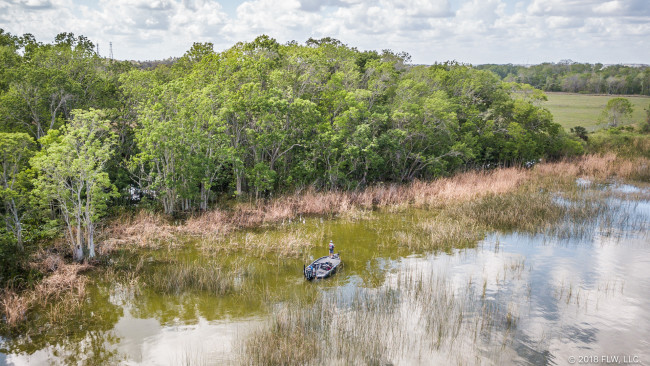
Running to Lake Apopka represents the biggest time commitment a pro can make. Traveling from takeoff to the mouth of the canal takes about 1 hour and 25 minutes, and it involves several decent idles and a lock in the Apopka Canal that fits just two bass boats at a time.
Apopka is 3 to 4 feet higher in elevation than the rest of the lakes in the chain, and it’s the first lake. Its water flows all the way through the others and out of Griffin. It was once one of the most polluted lakes in Florida, mucked up by farms that dumped excess phosphorus into the water in the first half and middle of the 20th century (you can see the remnants of them over the sides of the canal into the lake). Since the Lake Apopka Restoration Act in 1985, Florida has spent more than $200 million to try to bring the lake back. It’s worked to an extent, and while the lake isn’t clear and clean and loaded like it was back in the day, it’s healthy enough that the state of Florida dumped more than 100,000 largemouth bass fingerlings into the lake in the fall of 2016.
Though far from takeoff, Apopka has factored into the past FLW Pro Circuit events on the Harris Chain quite a bit. In 2017 and 2018, pros like John Cox and Zack Birge did well in the canals around the north end of the lake. In 2018, Glenn Browne made a top 10 by flipping for unseen spawning fish around arrowheads and cattails in the main portion of the lake.
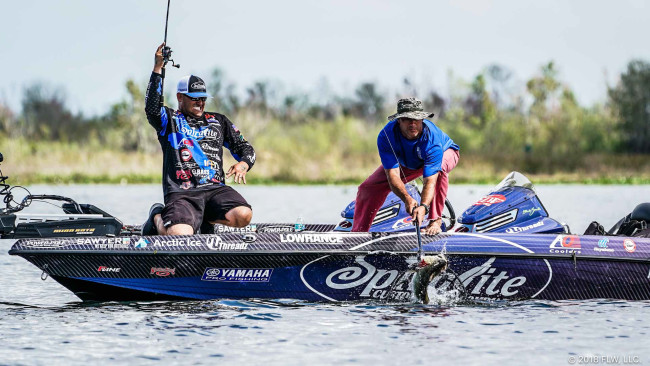
Making the long journey into Lake Griffin is probably going to be a popular move. It’s got a reputation for fishing well and has as much offshore grass as any lake in the system. From takeoff, it takes between 50 minutes to an hour to get there. After traveling through the Dead River into Lake Eustis, pros will turn left and run into Haines Creek, where there is a lock that fits nine bass boats at a time, as well as a few idle zones. The lock into Griffin drops several feet from Eustis and Harris. It’s technically the last lake on the Harris Chain and is the one that Apopka, Harris and all the rest drain into.
Griffin is a bit unique in that there are several marshes that have been opened to fishing around the lake. The Emeralda Marsh Conservation Area is trolling motor-only, but the marshes have cleaner water than nearly anywhere else in the chain and look simply fantastic. Every year, at least one or two pros have a big day in the marshes off Griffin, and it’ll be no surprise to see someone catch them in the marshes this time.
One of the most scenic passages between the lakes is also one of the most annoying. The Dora Canal connects Lake Eustis and Lake Dora and takes about 20 minutes to idle through. Luckily, the journey is gorgeous, and it feels like you’re idling through an unmolested swamp, even though you can hear the sounds of civilization in the distance. One thing to keep in mind is that it can get busy with pleasure boaters changing lakes on the weekend. The canal is quite narrow and winding. There are places where pros will need to be careful when passing other boats.
Lake to lake, the whole chain looks like Florida, but it’s mostly a bit more developed than Kissimmee or Okeechobee. So, in addition to miles of vegetation, there are a bunch of docks along the shorelines for added cover and tons of residential canals where bass can spawn. The canals in particular might be a focal point this week. They’re known for cleaner water than the main lakes and better conditions for sight-fishing bedding bass.
Some of the canals are almost too narrow to turn a boat around in, and others are pretty wide, so that a couple of boats can pass by easily. There are canals hemmed in and shaded by trees, and some have houses with manicured lawns built right up to the edge. The canal system is a unique, but important feature of the chain for sure.
Another somewhat unique feature of the Harris Chain is the offshore bite. This year there is quite a bit less offshore grass than was in the chain in 2018, but there is still a very good chance that we see some anglers do well relying on a truly offshore pattern. As JT Kenney demonstrated on the final day in 2017, there are also some very potent shell beds to be mined.
Besides submerged grass, the most common vegetation types throughout the Harris Chain are Kissimmee grass and pads. Both are known to hold plenty of bass, and the roots of pads are an especially good target during the spawn. With the diminished offshore grass in the chain, you can expect to see a more pros lean on the traditional Florida vegetation this time around.
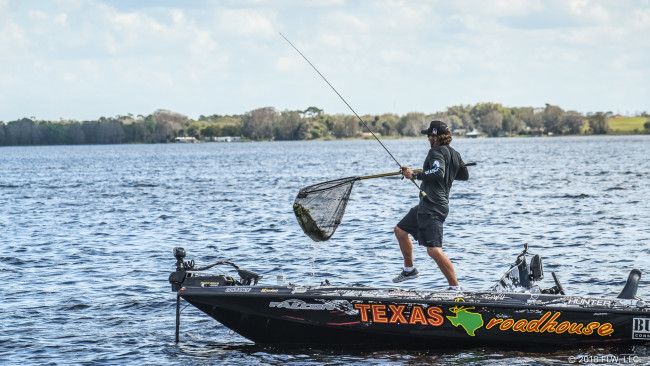
This year, the spawn has been unusually spread out in Florida due to a very warm winter. So, though a lights-out sight-fishing event is far from a certainty, the Harris Chain has proven to be a fascinating fishery even when the fish aren’t spawning. Perhaps the offshore game will be strong in 2020, or perhaps it’ll be a traditional Florida tournament or even something else – because of the diversity of the fishery, it’s truly hard to predict what the Pro Circuit anglers will encounter.
